As a succulent lover, you want to do what’s best for your precious plants, but how do you know when you should give your succulents and cacti nutrients? Is there ever a time that you should avoid feeding them? Don’t worry, we’ve got the answers you’re looking for.
More than a few gardeners have heard that succulents and cacti don’t need plant food. After all, they’re supposed to be low-maintenance plants, right? Well, yes and no. Whether or not your succulents need additional nutrients depends on several factors.
Jump to:
- Why Should You Fertilize Succulents?
- More Colorful Plants
- Replace Lost Nutrients
- When You Shouldn’t Give Your Succulents Nutrients
- When Should You Fertilize Succulents?
- What Nutrients Do Succulents Need?
- Nitrogen
- Phosphorus
- Potassium
- Types of Fertilizer
- Plant Food
- Worm Castings
- Manure
- How to Fertilize Succulents
- Indoor vs. Outdoor Plants
Why Should You Fertilize Succulents?
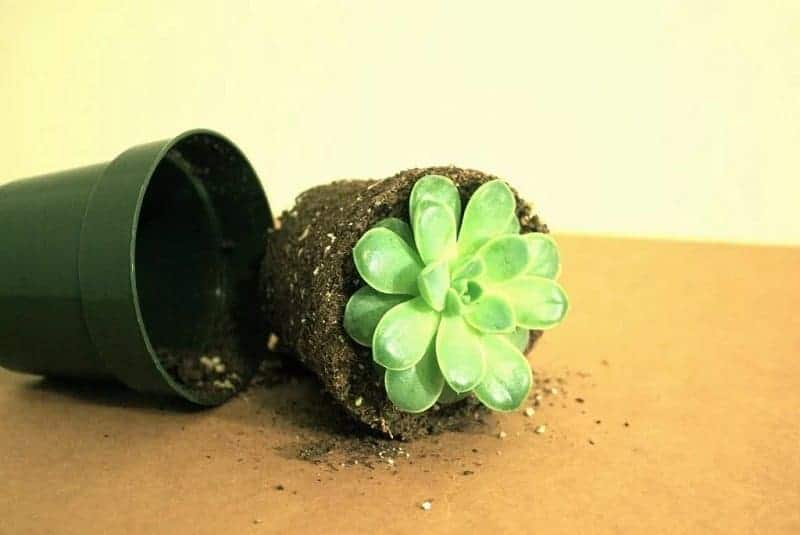
While succulents and cacti don’t technically need fertilizer in order to live and grow, using the right fertilizer can give your plants the nutritional boost they need to grow quicker and bloom more intensely.
Most succulents will grow fine without ever receiving additional nutrients from fertilizer. Again, these are plants that are used to growing in some pretty harsh environments. In the wild, they don’t receive frequent nutrients from rainwater, so they can survive on very little.
However, since we’re all modern gardeners who want the biggest, most beautiful gardens, we need to feed our succulents and cacti on occasion. Fertilizer is what makes the difference between your plants just surviving or truly thriving.
Read Also: Best Grow Lights for Seedlings
More Colorful Plants
Not only will your succulents look better than ever, they’ll be healthier than ever. With the right balance of nutrients, a fertilizer will give your plant the strength it needs to combat environmental stress such as extreme temperatures, pests, and increased light levels.
As you may already be aware, a little bit of stress is a good thing when it comes to succulents. Stress can cause your plants to develop more vibrant colors, but if your plant is already unhealthy that stress can be more than your precious plant can handle.
The nutrients contained in fertilizer will also provide your plant with the elements needed for photosynthesis, which will help brighten dull colors. If your succulents’ leaves aren’t as bright as they used to be, it might be time to give them some nutrients.
Additionally, if you’re trying to get your succulents or cacti to produce the incredible blooms that species is known for, extra nutrients might be just what your plant needs to flower.
See Also: Best Liquid Fertilizer
Replace Lost Nutrients
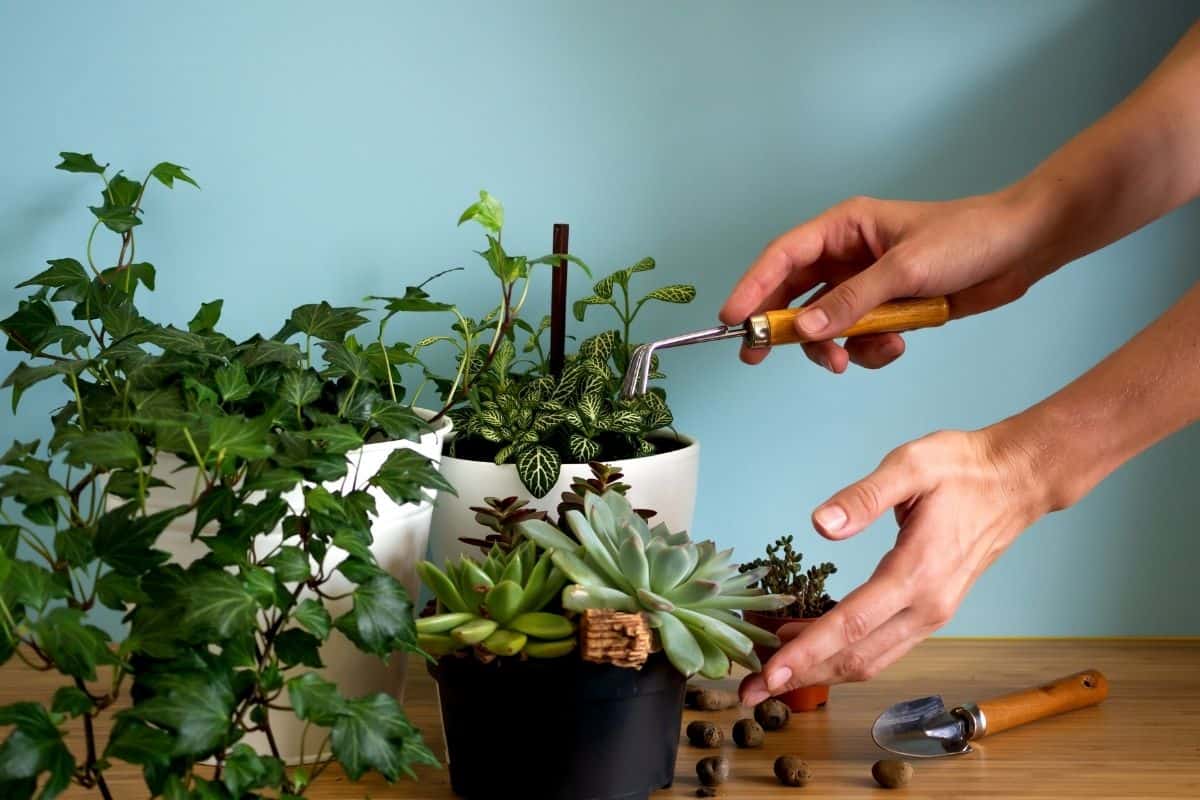
Over time, the nutrients contained in your succulents’ soil will dissipate or be absorbed, which means if your plants have been in the same containers for a long time, there’s probably not much nutritional value to the soil.
If that sounds like your current situation, consider feeding your succulents to replace the nutrients that have been lost. Your succulents will thank you.
Of course, the same goal is accomplished when you repot your succulents. Repotting succulents once they’ve outgrown a pot is the most common way that gardeners replace lost nutrients. Mixing fertilizer into fresh soil before planting your succulent is also recommended.
However, if you have particularly slow growing succulents, it may be some time before they outgrow their current containers, so the occasional dose of fertilizer might be just what your plants need to stay healthy and vibrant.
If you notice that the upper leaves of your succulents are turning yellow, it could be due to a nutrient deficiency. This would mean that your succulents could definitely use a little fertilizer. If the lower leaves are turning yellow first, it may be due to overwatering.
When You Shouldn’t Give Your Succulents Nutrients
Again, though fertilizer isn’t necessary there is one situation where you should avoid fertilizing your succulents. Don’t fertilize if you need to keep your plants small and compact, such as in a fairy garden, wreath, or living wall.
In those types of projects, the longer your succulents stay small, the better. Fertilizing will give them the nutritional boost they need to grow, which means they may outgrow your project. This can cause problems in containers that require plants to stay petite.
No products found.
You’ll likely need to trim or redo your masterpieces at some point anyway as you can’t completely stop your plants from growing. However, it’s less stressful for your plants if you don’t need to handle them frequently and it’s less stress on you since you’ll be able to enjoy your beautiful creation for a longer time period.
Of course, if your plants begin to look a bit under the weather, you may need to fertilize them anyway. You should always do what’s best for your plants, even if you have to redo a time-consuming project.
See Also: Best Pots For Succulents
When Should You Fertilize Succulents?
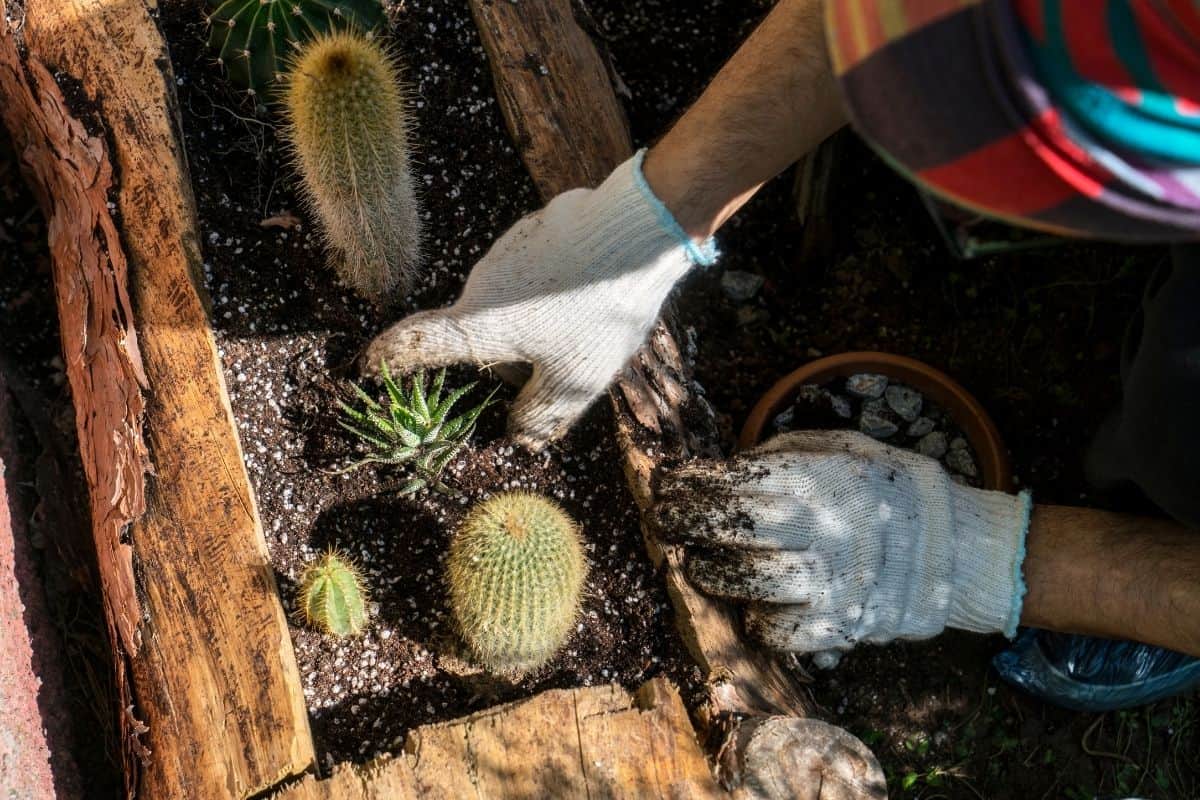
The best time to fertilize your succulents will vary according to species, as each species will have slightly different needs. In general, you want to fertilize sometime during the growing season. For some, this may be summer, for others winter.
Most expert gardeners will recommend fertilizing at the beginning of the growing season, rather than at the end. This way, the plants will be able to use the nutrients efficiently for the duration of the season. If you gave them the nutrients toward the end, they wouldn’t have much time to absorb them before entering a period of slowed growth and dormancy.
Depending on the type of fertilizer you use, you may only need to fertilize your succulents a few times during the growing season. Sometimes even once is enough. For more diluted products, you may also be able to use it every few weeks or even every time you water.
How frequent you feed your succulents will really depend on the product you’re using, so be sure to read the manufacturer’s directions prior to application. Many gardeners also suggest diluting fertilizers more than the packaging recommends just to provide a margin of safety so they don’t burn their beloved plants.
You should avoid fertilizing your succulents and cacti during any season of dormancy. If your plants are not actively growing, they’re not going to make the best use of the nutrients that you’re making available to them.
Additionally, you should avoid fertilizing dry soil. This can cause the fertilizer to burn your plants, so if you’re fertilizing your garden you want to either dilute the fertilizer or fertilize after watering.
Read Also: Perlite vs Pumice (Which One Is Best?)
What Nutrients Do Succulents Need?
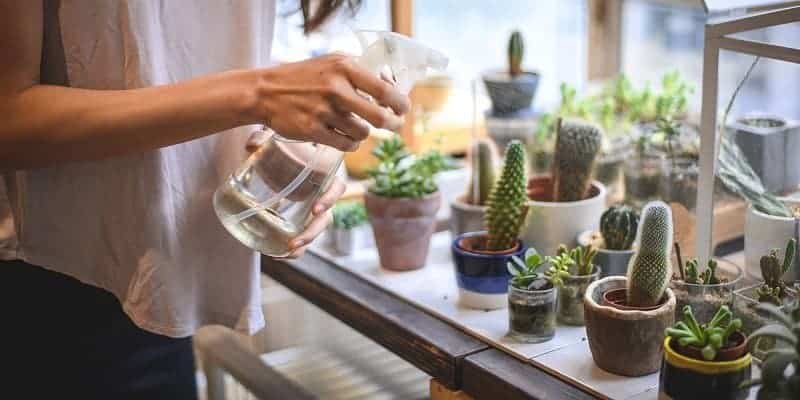
As you may discover the first time you wander the aisles of your local gardening center, there are a lot of choices when it comes to plant fertilizer. It can be a bit overwhelming if you’re not sure what you’re looking for, but we’ll discuss a few of the most common options.
See Related Topic: Best Soil Moisture Meter
When shopping for fertilizer you’ll likely see a series of three numbers listed on the packaging. This number is the NPK ratio, which explains the amount of nitrogen (N), phosphorus (P), and potassium (K).
Those letters are the chemical symbols for those substances as seen on the periodic table of elements, in case you’ve forgotten what you learned in science class. So, a fertilizer labeled as 10-10-10, contains 10% each of nitrogen, phosphorus, and potassium.
Nitrogen
When absorbed by plants, nitrogen is responsible for leaf grown and adds to their ability to develop vibrant colors. The higher that first number, the more nitrogen there is in a fertilizer.
Fertilizers with particularly high nitrogen content are best suited for plants like grass, so you’ll want to consider a balanced fertilizer with a lower NPK ratio.
Phosphorus
Phosphorus is responsible for healthy root growth. Strong roots mean your succulent will be safely anchored into the ground or its container. It will also be able to absorb nutrients from the soil more efficiently.
Additionally, phosphorus aids in the production of flowers, so if you’re trying to make your succulents or cacti bloom, consider giving them a little fertilizer.
Potassium
Potassium is sometimes referred to as potash, because pot ash was the primary source of this product prior to the industrial era. Potassium is essential in keeping your plants healthy and boosting their immune system.
A healthy immune system means your precious succulents will be better able to fight off pests and disease. Remember, a little stress is good for your plants, so you want them as healthy as possible so they can handle that stress and develop those gorgeous bright colors.
Types of Fertilizer
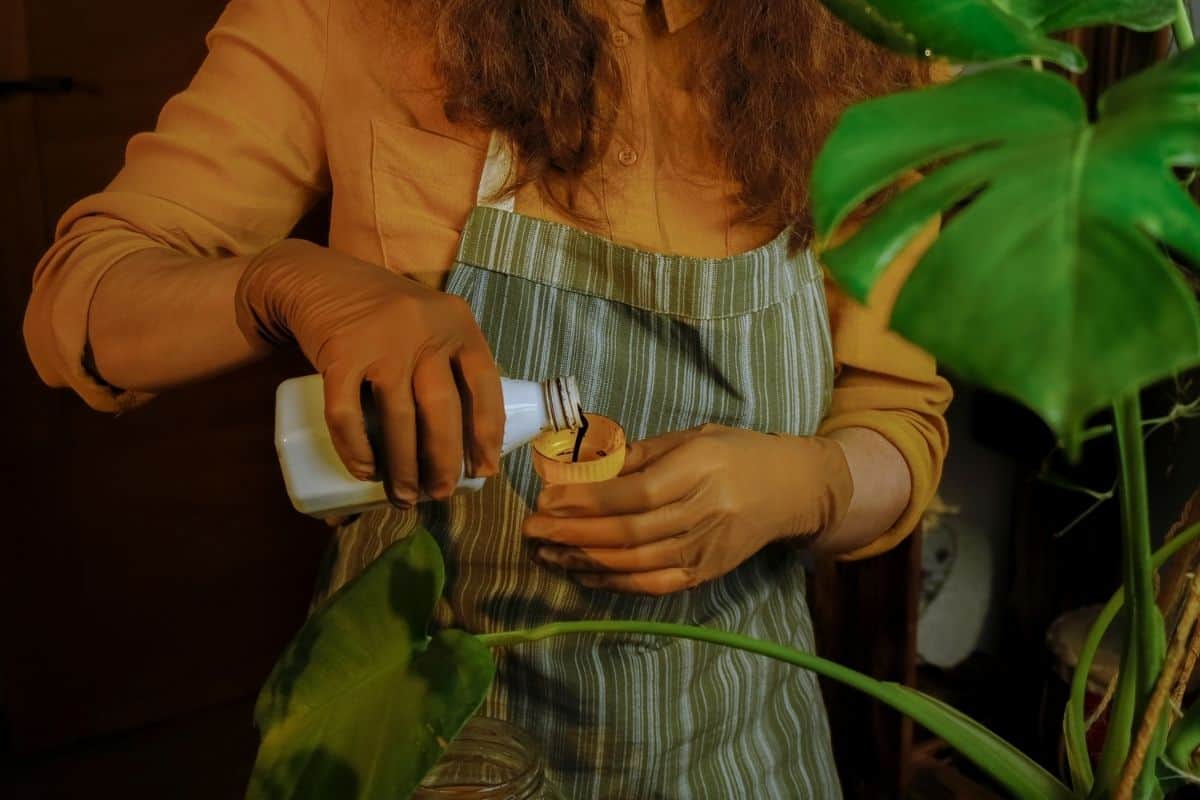
If you’re paying attention, you’ll have noticed that our sample NPK ratio of 10-10-10 only adds up to 30%, so what’s in the rest of the package? Filler, which may contain additional nutrients, or simply make it easier to spread. The filler may also dilute the fertilizer to a tolerable level, so it doesn’t burn the plant.
Additional nutrients contained in a fertilizer can include calcium, which improves vigor and promotes growth. Magnesium may also be added to aid in photosynthesis, the update of nutrients, as well as seed formation. Sulfur may also be found in some formulas and is meant to encourage plant growth.
Plant Food
Plant food is most often found in either liquid or granular form. Granular formulas are often intended for “slow-release”, meaning they won’t dissolve entirely the first time you water your plants. A single application can last anywhere between four and nine months.
Liquid plant food, on the other, are either ready to use or must be diluted and tend to release nutrients quickly, so they’ll need to be reapplied more frequently. Some are designed to be used as often as every time you water for the duration of the growing season.
If you’re wondering what type of plant food is recommended for succulents, we’ve compiled a list of the Best Plant Food of 2020. No need to spend your free time researching plant foods when we’ve done the hard work for you.
Worm Castings
Worm castings are the waste product of earthworms. Yes, that’s right, it’s basically worm manure. Nutrient-rich castings contain the usual nitrogen, phosphorus, and potassium, as well as nutrients and minerals such as copper, zinc, magnesium, and calcium. They also have a naturally neutral pH level of about 7.
In addition to valuable nutrients, worm castings also contain an enzyme called chitinase, which can help repel and kill pests. Insects’ exoskeletons are made of a compound called chitin, which is broken down by chitinase. This can help keep prevent pests from making their home in your garden.
Worm castings are safe to use on succulents’ leaves and stems, so you can also mix castings with water to use as a topical chitinase application, further protecting your precious plants from pests. This “worm casting tea” can also be used as a soil drench if you’d prefer not to use it as a foliar spray. Either way, it will keep annoying bugs at bay.
Many gardeners recommend mixing worm castings into your soil each time you plant a new succulent or repot an older one. This will help keep the soil nutritious for longer, which means you won’t need to fertilize as often.
Manure
Manure is probably the most well-known and widely used fertilizer. Manure can come from a variety of grazing animals including horses, cows, sheep, and even chickens. As plant material passes through the animals’ digestive systems, it is broken down and what’s left is a nutrient rich compound that plants love.
The only problem with manure is that it can smell pretty bad. Most succulent lovers would prefer that their homes don’t smell like manure when guests come over to see their beautiful gardens.
If you’d like to try the benefits of manure, but can’t endure the smell, consider using manure tea. Manure tea is more or less what it sounds like. You soak a “teabag” in water for a day or two and use the “tea” to fertilize your plants. No mess, no smell.
Most gardeners recommend using manure only once or twice per year. Whether you’re using actual manure or manure tea, it’s so nutrient dense that you don’t need to add it often to see the benefits.
How to Fertilize Succulents
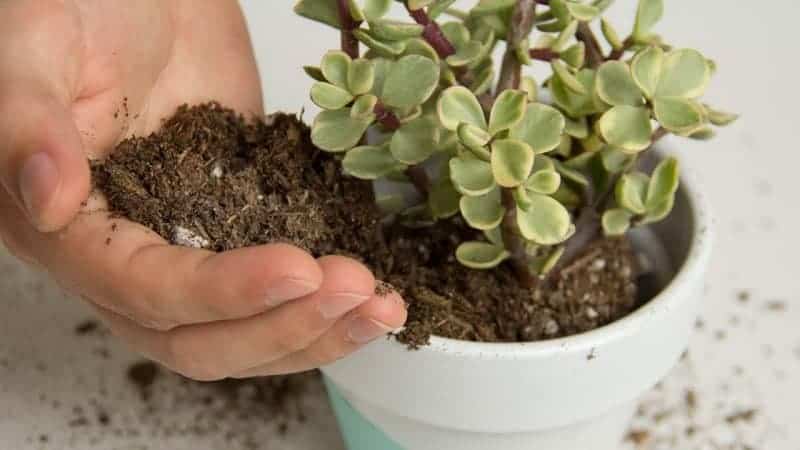
If you’ve found a good fertilizer that’s appropriate for use with succulents, you’ll want to prepare it according to the manufacturer’s instructions. As previously mentioned, you may also consider diluting a bit more just to be safe.
While some fertilizers will not harm your plants if you accidentally splash it on the leaves, some may burn your plants, so it’s always best to be safe and apply the fertilizer directly to the soil if possible.
If your succulents are planted closely together, this may be more difficult, in which case you may consider using a more diluted source of nutrients. Many gardeners suggest cutting the recommended dosage by half to make sure that the product is safe.
You’ll also want to use caution if you’re feeding succulents that have become etiolated. Etiolation, or stretching, occurs when plants aren’t getting enough light. Fertilizer won’t fix etiolation and will instead encourage more growth and thus more stretching.
So, if you notice that your succulents are beginning to stretch, consider giving them more light before you give them additional nutrients. If you can’t find a window that provides the appropriate amount of light and can’t take them outside, consider investing in a grow light.
As we mentioned earlier, be careful that you aren’t fertilizing your succulents in dry soil. Even if you’re using a liquid fertilizer, it’s best to water your plants beforehand. Some fertilizers can be diluted into the water, so you can just add it to your watering can, but others may need to be applied after watering.
As always, keep a close eye on your plants to make sure that they’re handling the fertilizer well. If you notice any burnt spots on the leaves or stems, you’ll know to avoid splashing them next time or dilute the fertilizer further.
Indoor vs. Outdoor Plants
There is some debate on whether indoor or outdoor succulents need fertilizing more than the other. However, it’s worth noting that how often you fertilize your plants will depend on where they’re planted.
Obviously, indoor plants have a limited supply of soil and don’t have the benefit of the nutrients contained in rainwater. They do, however, lead a rather cushy life as they’re not exposed to the elements, so they don’t need the strength to battle against nature.
Outdoor plants, on the other hand, have plenty of soil to expand through in search of nutrients and they have the added benefit of rainwater. However, in climates with limited rain, a garden full of succulents can absorb much of the nutrients out of the soil over a period of time.
So, do you need to fertilize indoor or outdoor plants more often?
Well, it really depends on the conditions your plants are kept in. Rather than saying that your plants should be fertilized so many times per year, consider monitoring them and fertilizing them as needed. If they look like they could use a boost of nutrients, consider feeding them.
Again, you’ll need to know your plants and avoid fertilizing them during their dormant season, regardless of whether they’re indoors or out. You may get tired of us telling you to research your plants, but it’s really the only way to make sure you’re giving them the type of care they need.
You Might Also Like:



Sioux
Love new articles